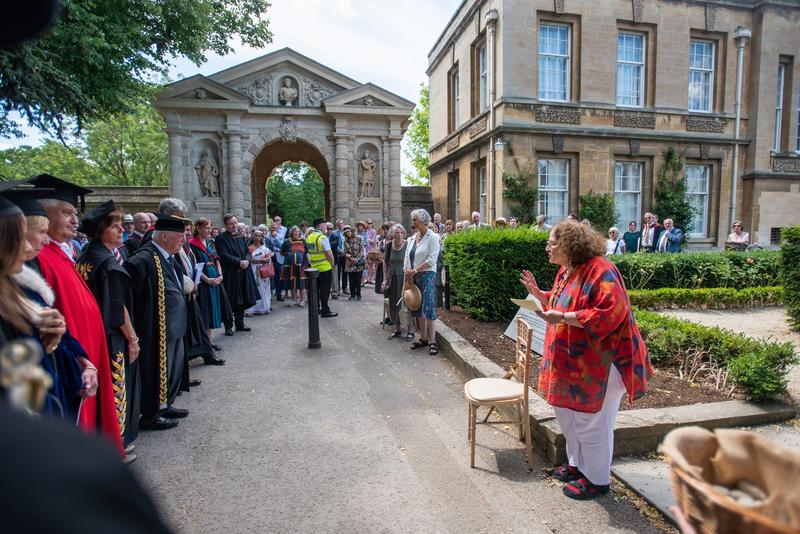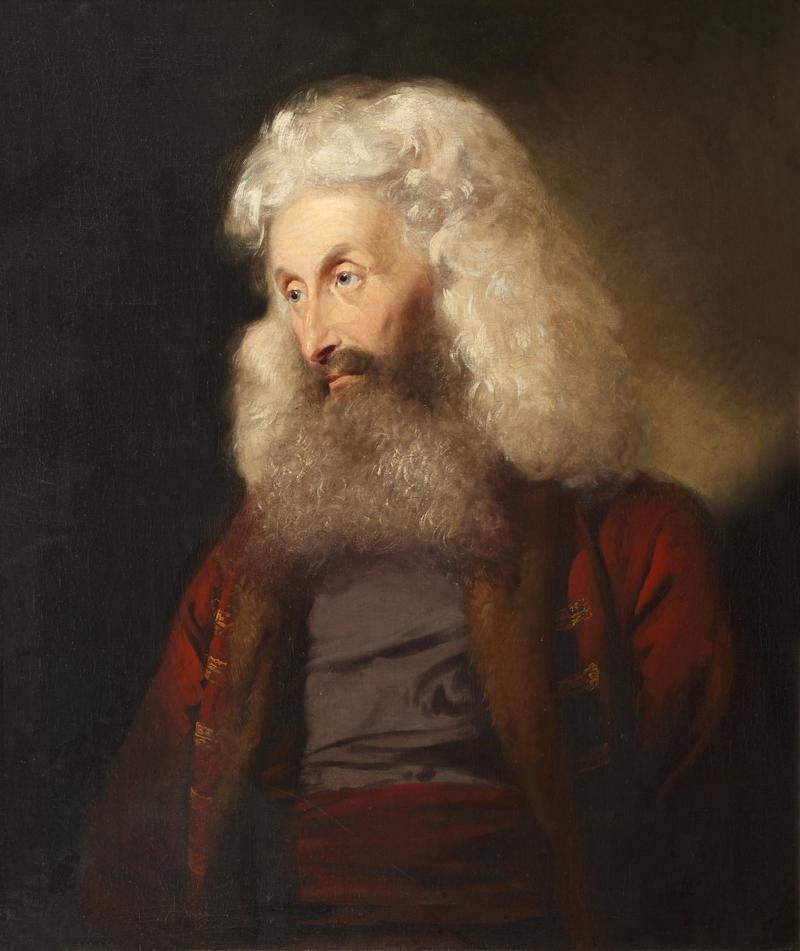400th Anniversary of Founding of Oxford’s Botanic Garden
The OBG and Oxford’s Medieval Jewish Cemetery

The Botanic Garden and Oxford’s medieval Jewish cemetery have walked hand-in-hand for the past 400 years. For much of this time, the collective memory (when there was one) held that the Botanic Garden had been built on top of the 13th century Jewish burial ground. While this might have seemed to some to have been a rather insensitive move on the part of the 17th century University, one has to remember that 332 years had passed since the last Jew had been buried here in 1290—a fact which may have been forgotten at the time.
Besides, the notion that the Jewish cemetery lies under the Botanic Garden is not entirely true. And the actual story may go a fair way toward explaining why, for instance, the great Danby Gate is where it is, and not more prominently positioned directly off the public thoroughfare.
In 1190, Oxford’s medieval Jews purchased a water-meadow outside the East-gate for a cemetery, because no Jew could be buried within the City Walls. However, this first Jewish Cemetery was on the other side of the High Street, where the Tower, Chapel and Cloisters of Magdalen College now stand. That cemetery was in use until 1232 when the Hospital of St. John-the-Baptist “appropriated” it for themselves, having long coveted its prominent position welcoming any traveller entering Oxford from the direction of London. In displacing the Jews from their cemetery, the Hospital and the King magnanimously “gave” the Jews this alternate spot, across the road.
Now this second “spot” was a far cry from the original one the Jews had lovingly walled in, built up and tended for over 40 years across the road. For one thing, this new site had never been developed and lay several meters below the road which lent it to flooding by the River Cherwell. The Hospital had lost no time in erecting its new buildings directly on top of the Jews’ actual burials in the areas now occupied by the older parts of Magdalen College. (No Jewish graves were removed first.) But to add insult to injury, the Hospital of St. John-the-Baptist diverted a stream from Holywell’s spring to continuously flush out the new hospital site. That medieval sluice conveniently emptied under the road right into this second Jewish cemetery where the street entrance staircase stands now. We can imagine how much of a bog or swamp it created here.
Unlike the 1st Jewish cemetery across the road whose full dimensions were never recorded, we do know precisely how large this 2nd Jewish burial ground was—which brings us back to the point of the Botanic Garden not really being on top of the medieval Jewish cemetery. It is recorded that this 2nd cemetery measured 300 feet along the road, by 80 feet deep. As we are uncertain exactly how wide the medieval road was in the 13th century, we are uncertain where the measurement of the 80 feet deep should start. So because of this fact, the only part of the Botanic Garden itself that might be on top of the Jewish cemetery would be parts of the Daubeny Building, which wasn’t built until 1737 or so.
Having been thrown off their 1st cemetery, the Oxford Jews were, in effect, evicted from this cemetery in 1290 when all Jews were expelled completely from England. This, of course, was long before Magdalen College was founded --168 years later-- in 1458. The two plots of land on this side of the road (inherited by Magdalen College from the disbanded Hospital of St. John-the-Baptist) had retained their distinct identities by then. The front piece --the medieval Jewish burial ground which had become an auxiliary over-flow cemetery for the Hospital after the Jews were exiled in 1290-- remained distinct from the large water-meadow behind it –known as Paris Mead-- which is where the Botanic Garden was established and where it has stood for these 400 years.
The last physical appearance of the burials in the medieval Jewish cemetery here, actually took place concurrently with the existence of the Botanic Garden itself in the early years of its existence. During the construction of the Botanic Garden this entire area was filled in and raised with over 4000 cartloads of earth. In 1646, the Parliamentarian, Thomas Fairfax (camped across the River Cherwell in St. Clements) was laying siege to Oxford. The Royalists inside the city –defending its critical Magdalen Bridge-- set up their gun emplacements here, in the medieval Jewish cemetery. The mounds of banked earth needed to achieve the required trajectories for these cannons, were said to have been gruesomely spiked out and throughout ––with the bones of those deeply buried here from time immemorial.
I end with one last interesting twist of history. The very first Keeper, or Hortus Praefectus of this Botanic Garden (not only Britain’s first Physic Garden but one of the oldest scientific gardens in the world) was a German horticulturalist named Jacob Bobart the Elder. It is not well known that Bobart was a Jew --a crypto Jew or secret Jew-- because, still in 1642 (352 years after the medieval Jews of Oxford had first been expelled) Jews remained excluded from England.
Delivered 1pm July 15, 2022

Portrait thought to be Jacob Bobart the Elder (1598-1679). Medium: oil on canvas; date and artist unknown; acquired before 1799. Dimensions: 735 mm x 612 mm. Copyright: Department of Biology, University of Oxford. Reproduced by permission, all rights reserved. Low res version: Art UK accession no. PCFA7.



